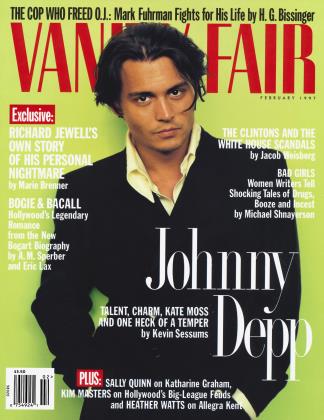Sign In to Your Account
Subscribers have complete access to the archive.
Sign In Not a Subscriber?Join NowBraque in Style
SPOTLIGHT
To define something is to substitute the definition for the thing," said the French artist Georges Braque, declining an invitation to describe what his work was about. Yet the vast body of still lifes produced by Braque (1 882—1963) does just that: it replaces the objects which he defines with his brush so that they take on new forms and relate to one another in spaces which are entirely Braque's own. Even at the height of the Cubist experiment—when he joined Picasso in the greatest artistic collaboration of the 20th century—Braque was always concerned with the ordinary things that could be found in a studio, and his output can be seen as a series of redefinitions of those immediate surroundings. Their project had been effectively ended by the First World War, in which Braque received a serious head wound. When he recovered and returned to his studio, he began to put flesh on the grave abstractions of Cubism. His palette expanded, and a concentrated ly cism entered his painting, which found its fullest expression in the late works that are on show at London's Royal Academy of Arts until April 6 and at Houston's Menil Collection beginning April 26. The exhibition draws from four of Braq major cycles of work, including the "Bird Paintings," in which the familiar objects of his still lifes are joined by the stylized shape of a bird streaking across the canvas like a ray of light. One is reminded of what Braque wrote in his notebooks: "Reality only reveals itself when it is illuminated by a ray of poetry. All around asleep." The bird in his late paintings performs that task
HENRY PORTER
 View Full Issue
View Full Issue


















Subscribers have complete access to the archive.
Sign In Not a Subscriber?Join Now